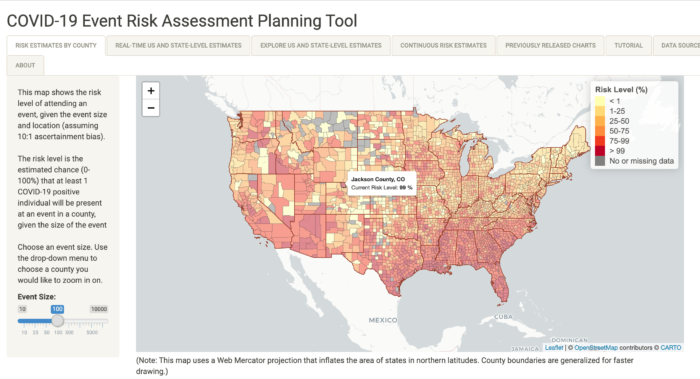Skift Take
The live event industry is desperate to go back to business. Some events are willing to pursue a comeback at all costs, even if it means getting attendees sick. Who is right and who is wrong?
The event industry is bleeding. Painting a nice picture is not helping anyone.
If you know anyone who works in events, they have either been furloughed, been laid off, shut down their business, or transitioned to another job.
Some planners were able to contain the damage by pivoting to virtual. Actually, only 60 percent of them. But only thinking about planners means ignoring millions of people working as suppliers to live events that have no part to play in the virtual event revolution.
The Industry Lacks a Plan
What’s worse is that the industry does not have a plan.
There seems to be only confusion within the industry about what the comeback looks like.
A case in point is the event industry in the UK — one of the last countries with a government plan to get back to business in Europe.
This plan came after media campaigns and widespread outrage — a monumental effort that required thousands of supporters. This is a country that is home to companies such as Reed, Informa, and Clarion — the largest business to business event owners in the world.
Meanwhile, the uncertainty brought businesses to closure, caused planners to lose their job, and in some unfortunately growing cases, to take their own lives.
Live Events are Happening
A plan for the event industry to go back to business means understanding the universal factors that make events safe.
What event professionals want is a clear framework to work with.
The fact is that, in countries where the virus is momentarily under control, it makes a lot of sense to run safe business events.
This is the case with several countries in Europe, Asia and the Middle East. Smaller, local and hybrid events.
Event planners are putting measures in place that make their events way safer than going to a restaurant or a movie theater. Intuitively safer than flying in a box with 350 fellow passengers.
In a country with few cases a day, the risk of one attendee having Covid-19 and spreading it to all those in attendance (when strict distancing, masks, and sanitizing are in place) is incredibly low.
These are the case studies we desperately want.
Going Ahead at All Costs
However, there are some events that are going ahead no matter what. They are trying to prove a point. A potentially dangerous point.
An interesting tool put together by a team led by Joshua Weitz, a professor in the School of Biological Sciences at Georgia Institute of Technology, helps us to understand the risks involved with planning events in specific areas of the U.S.
Let’s take, for example, an event scheduled to happen this week in Colorado’s Jackson County with a forecasted attendance of over 1,000 (one thousand).

COVID-19 Event Risk Assessment Planning Tool
It is interesting to note that an event with only 100 (one hundred) attendees in that area has a 99 percent probability that someone with Covid-19 will show up.
This tool may be wrong in its estimate. It may be flawed in its assumptions, yet even with a 1/10 margin of error, an event in Jackson County don’t seem to meet the minimum requirements to clear a simple event risk assessment.
Many planners are asking themselves how such events can go ahead. They are asking themselves if they are missing the big picture and events of this size in areas with an incredible growth of cases can actually happen.
Some areas of the U.S. are in fact experiencing incredibly higher rates of infection compared to when the lockdown and restrictive measures for events were in place.
So where is the truth?
Who is right? Who is wrong?
Are some event planners being overdramatic or are they just trying to protect attendees?
Are other event planners commendable to try to start meeting live again or are they just looking for trouble?
A Few Questions
For an industry that prides itself on its incredibly practical attitude, the lack of action on the part of its leadership is astounding. This lack of direction is opening up for interpretations, risk-taking, and polarization.
An increasing number of event professionals want answers to the following questions:
- How are leaders working with the CDC, WHO, or other government disease control agencies to create a standard, worldwide safety framework for live events to come back?
- What are the factors event professionals should monitor to correctly assess the feasibility of an event?
- What is the plan to support suppliers and planners who have no part to play in virtual events?
- What will happen after the government support for businesses and workers expires (end of July in the US)?
- How are leaders explaining to governments the unique challenges of the event industry?
- How do the leaders of the event industry plan to support those that lost their jobs or their businesses? What measures are they putting in place to provide relief?
As always at EventMB, we are willing to offer a platform to anyone with answers supported by clear and factual evidence.
Meanwhile, event planners are required to hang in there, help each other, and voice their discontent. As time is running out for many, we hope action will follow.





